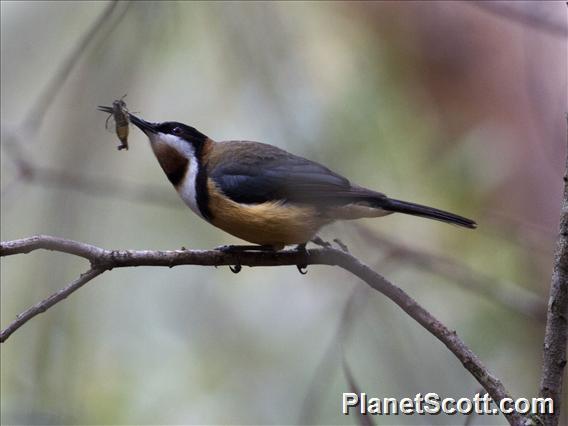Eastern Spinebill (Acanthorhynchus tenuirostris)

Eastern Spinebill (Acanthorhynchus tenuirostris)
×


Eastern Spinebill (Acanthorhynchus tenuirostris)
About Eastern Spinebill (Acanthorhynchus tenuirostris)
- Kingdom: Animals
- Phylum: Chordates
- Class: Birds
- Order: Perching Birds
- Family: Honeyeaters
The eastern spinebill is a species of honeyeater found in south-eastern Australia in forest and woodland areas, as well as gardens in urban areas of Canberra, Sydney, Melbourne, Adelaide and Hobart. It is around 15 cm long, and has a distinctive black, white and chestnut plumage, a red eye, and a long downcurved bill.
Source: Wikipedia
Lifelists
Trips
Visits
-
2012-11-09
Mount Lewis, Australia -
2012-11-18
Katoomba - Blue Mountains, Australia -
2012-11-21
Royal National Park, Australia -
2012-11-22
Morton National Park, Australia -
2012-11-23
Wollongong Lagoon, Australia -
2025-11-18
Kennett River, Australia



